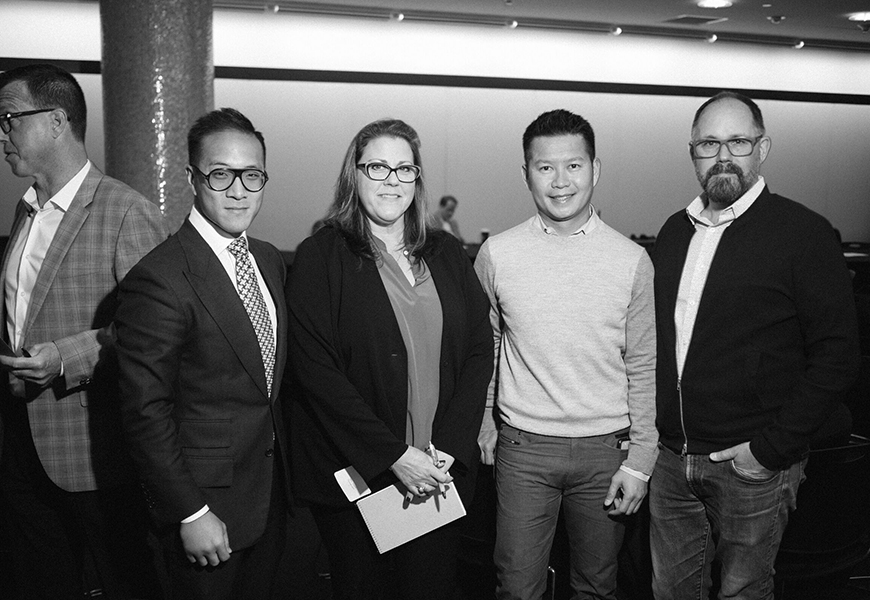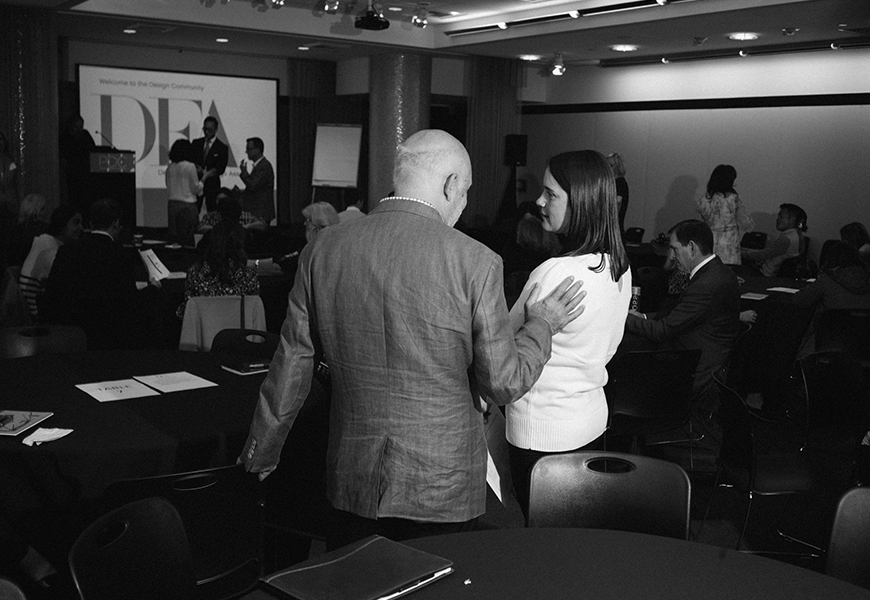The Decorative Furnishings Association, DFA, is an organization made up of business leaders who are committed to energizing the services that the design industry brings to society, educating trade members on best practices in design, encouraging the use of technology in design, and gathering professionals together to maintain industry-wide awareness and inspiration. Leading member of the DFA and Quintus CEO, Jobst Blachy told GDG “The mission [of the DFA] is to promote the health and well being of the interior design trade.”
According to DFA President, Eric Chang of Hellman-Chang furniture, The DFA was originally a non-profit organization made up of just textile and fabric companies committed to supporting the design trade, and later became an all-encompassing trade organization following the 2008 recession- enveloping furniture companies, showrooms, design centers and press partners.

(Far left) Eric Chang, DFA President
“Since taking over the Presidency in 2018, we’ve focused our efforts on helping the interior design trade modernize by becoming aware of technology solutions that will help us navigate the changing consumer landscape brought upon by the Internet, growing consumer interest, and retail,” Chang shared.

(Above) DFA E-Commerce Summit 2.0 at the PDC
Whether in conversation or practices, Innovation is in the DNA of the DFA; they’re always looking ahead. The Pacific Design Center recently hosted the DFA’s E-Commerce Summit 2.0- their single west coast meeting for the year- that talked next steps in the industry, including encouragement of embracing technological solutions. Chang shared a bit about the conference’s featured professionals.
“We had some wonderful speakers and technology solutions – such as the chief marketing officer Marnie Maton of TrueCar, a company that played a major role in modernizing and helping the antiquated and confusing process of car purchasing; Erinn Valencich who presented a comprehensive study of millennial purchasing practices; Sara Taylor-Demos of Cora Home, who discussed the implications of online taxes for the furnishings industry, and data aggregation services; and Mark Erwin of Buildmine, who created a powerful and robust custom pricing tool for trade manufacturers,” said Chang.

(From Left) Thomas Lavin and Erinn Valencich
The DFA has brought in outside professionals to their meetings who have welcomed technology into their brands and are better for it. “We’re the only non-profit that is working to make this industry grow,” Blachy said. But Blachy said that the result of this tech conversation didn’t convince everyone to want to move the industry into an e-commerce machine, but rather to join in on honing technology to improve all of our present design systems. If you can’t beat them, join them.
“The biggest takeaway is that everyone thought tech is the biggest opportunity but not for e-commerce in terms of finding new people to buy from us; rather to utilize tech to streamline workflows between showroom, brand, designers to be more efficient and more profitable,” said Blachy.
 (Far Right) Rocky LaFleur
(Far Right) Rocky LaFleur
“We don’t feel like tech coming into the industry is going to displace the need for design centers, showrooms, and designers,” Blachy said. “Designers are that much more important. Designers bring design talent to a project; the administrative part isn’t the talent they provide for their clients.” The DFA encourages the use of technology ultimately to create more transparency and communicative internal and external design processes. “We’re very optimistic about the future. The future has to include a huge tech component to it,” Blachy said.

To find out more information about the DFA and how you can get involved, visit their website here.
*All images credited to Mike Allen Photography
